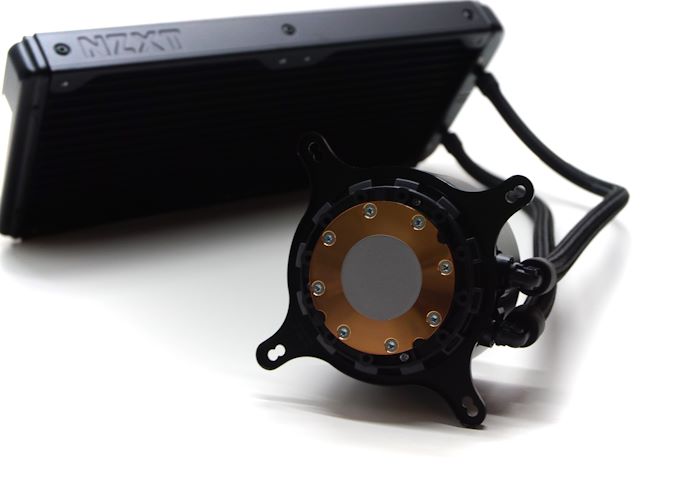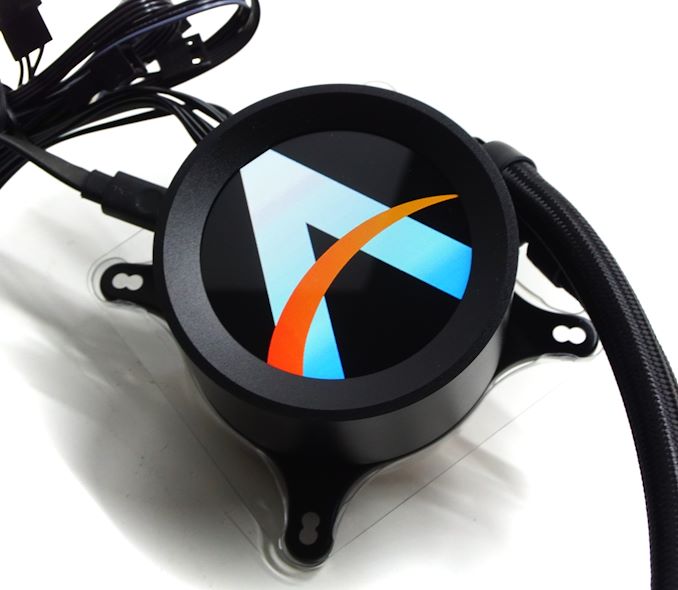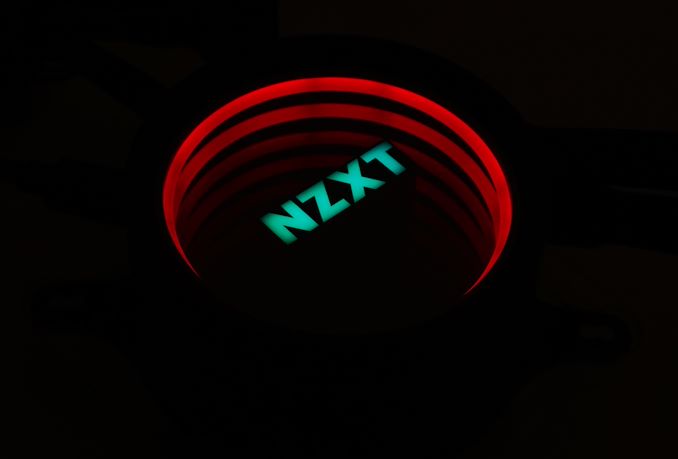The NZXT Kraken Z63 & X73 AIO Cooler Review: Shiny On Top, Solid Underneath
by E. Fylladitakis on August 19, 2020 11:00 AM ESTConclusion
NZXT is in the business of designing and marketing unique products, both in terms of features and aesthetics. The new Kraken Z-3 series is a testament to those goals, as the versatility of the LCD screen opens up nearly endless possibilities for advanced users. However, the Z-3 is a very costly cooling solution and NZXT knows that it cannot compete in the mainstream market, which is why the company also offers the simpler Kraken X-3 series as well.
The X-3 series is for all practical purposes the same as the Z-3 series, just minus the LCD screen. Other than that, the fans, radiator, and main block assembly (including the pump), are all identical between the two series. As far as aesthetics are concerned, X-3 coolers still have RGB lighting and are compatible with the company’s CAM software. And more importantly for a crowded cooler market, they retail for significantly less than the Z-3 series coolers.
Aesthetics aside, the overall cooling performance of the X73 and Z63 coolers are very good. The X73 can deliver great thermal performance, but other products outpace it in terms of noise – including NZXT’s own Z63. In fact, in some respects the X63 actually outperforms the X73 if we're looking at the performance-to-noise ratio under typical loads. So although the larger X73 can ultimately deliver slightly better thermal performance, the significantly higher noise levels makes it a dubious choice unless the expected thermal load is going to be extraordinarily high. This leaves the more balanced Z63 (and presumably the X63 as well) as the better of the coolers in most situations.
Summing things up, we find that the NZXT Kraken X73 is a competitive product with good market potential. It performs very well overall, offers a great build quality, and looks sharp. Taking into account its performance, full set of features, and software support, at $180 it is a competitively-priced product. And while we didn't get a chance to look at the smaller, $150 X63, given the common architecture of NZXT's coolers, based on what we saw with the Z63, it may be the strongest of them all.
On the other hand, the NZXT Kraken Z63 (and the whole Z-3 series) finds itself at a very niche point in the market. The LCD definitely is a cool feature, but at $250 it nearly doubles the retail price of the cooler, a gap that's a bit much for something the majority of people will glance at but a few times during its entire lifespan. It might make sense as a real-time temperature/load indicator if the PC is positioned on a desk and in such a way that the motherboard is visible at all times by the user but, still, buyers are definitely paying a hefty premium for what's ultimately an aesthetic feature.













61 Comments
View All Comments
brontes - Wednesday, August 19, 2020 - link
When it comes to mixing water and electronics, nobody wants to mess around with unproven stuff.It works the same way in custom loop stuff. There are as many rebadges of the
asetek aio as there are the D5 and DDC custom loop pumps. https://laing-thermotech.com/industrial-commercial...
But I agree, after time the mix and match of each part provides a known quantity in terms of performance, which isn't bad. But it makes for a boring review. Kind of like the Lego style designs in midrange ssds.
brontes - Wednesday, August 19, 2020 - link
edit: Retest all these aios using the same fans instead of the included and I bet they would perform within margin of error of each other. Fan pairings make a much more apparent difference on a rad than a standard heatsink.Guspaz - Wednesday, August 19, 2020 - link
For that matter, any cooler review without noise-normalized testing is useless (who cares how well it performs at max fan speed, those aren't the same noise levels and can't be compared) and this review didn't include that. It does mitigate this with the thermal resistance versus sound pressure test at the end, but that doesn't really provide a convenient point of comparison, nor does it tell the user "How hot will my CPU run at a reasonable sound level."rpg1966 - Thursday, August 20, 2020 - link
It's extraordinary that their cooler tests don't have a simple x-y chart of noise/dB versus CPU temp.E.Fyll - Thursday, August 20, 2020 - link
Page 4, last section.TelstarTOS - Thursday, August 20, 2020 - link
of only 4 models.alufan - Thursday, August 20, 2020 - link
I dont understand why they dont test them all at a set RPM forget all the pwm stuff wire them i via a fan controller and set them at say 800 RPM and see which actually shifts the heat, my Custom loop rarely hits anything more than 750 rpm and my CPU is under 50deg C no matter what I do with itGuspaz - Thursday, August 20, 2020 - link
RPM is irrelevant. Performance at a fixed noise level is what matters, because a cooler that comes with noisy fans and a cooler that comes with quiet fans shouldn’t be weighted equally if they cool as well at the same RPM.TelstarTOS - Thursday, August 20, 2020 - link
"any cooler review without noise-normalized testing is useless"QFT. This review is almost useless and subpar for AT usual level of completness.
GNUminex_l_cowsay - Wednesday, August 19, 2020 - link
Don't retest these AIOs with the same fan. The brands that include inappropriate fans with their AIOs deserve the consequences of their poor decisions.